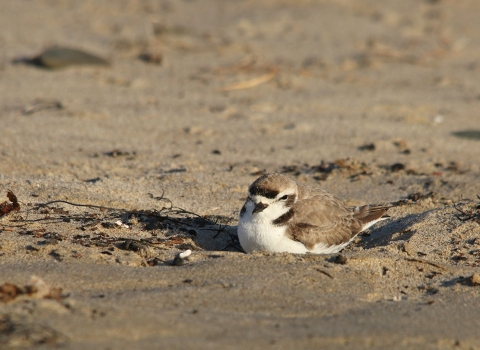DENVER – Like its iridescent dorsal fin, the future of Upper Missouri River Arctic grayling is shining brightly, thanks to efforts of diverse conservation partners. The U.S. Fish and Wildlife Service announced today that Endangered Species Act (ESA) protections for the Upper Missouri River distinct population segment (DPS) of the Arctic grayling are not warranted, based on a review of the best available science. The decision confirms a not-warranted determination that the Service revisited following a court challenge.
The critical conservation work completed by partners in the Big Hole Candidate Conservation Agreement with Assurances (CCAA) helped address threats to the species, including reduced river flows, degraded riparian riparian
Definition of riparian habitat or riparian areas.
Learn more about riparian areas, fish barriers and entrainment.
CCAAs are one of the many tools of the ESA that support proactive conservation of at-risk species. In return for specific, proactive conservation efforts, enrollees receive assurances that should the species become listed, they will not be subject to additional regulatory restrictions on their activities.
The Big Hole CCAA partners include private landowners, Montana Fish, Wildlife and Parks, Montana Department of Natural Resources and Conservation, Natural Resources Conservation Service, and U.S. Fish and Wildlife Service. Today, thanks to their efforts, the grayling’s habitat has been greatly improved and there is an increase in the number of breeding fish.
“The collaborative work in the Big Hole Valley is a model for other efforts on behalf of at-risk species around the country. Folks got together and figured out how to marry up the best scientific information on the needs of the grayling with the needs of the people who live and work on the land. The result is a strong and durable partnership that that has improved the status of the species,” said Noreen Walsh, Regional Director for the U.S. Fish and Wildlife Service.
Arctic grayling are native to drainages of the Arctic Ocean, Hudson Bay and the northern Pacific Ocean in North America and Asia. Two distinct populations historically inhabited waters in Michigan and Montana. While the Michigan population has been extirpated, surviving populations in Montana can be found in the Missouri River Basin and some high-elevation lakes.
Seventeen of the nineteen populations within the DPS are located primarily on federal lands and managed by respective agencies. However, one of the largest populations resides within private lands in the Big Hole Valley in Montana and so conservation of this DPS of Arctic grayling would not have been possible without the Big Hole CCAA and private landowners.
“Without the landowner commitment—without their buy-in, it’s not going to work. That’s what I love about CCAA,” said Blake Huntley, a fourth-generation rancher enrolled in the Big Hole CCAA. “You’ve got great people on the ground who know what needs to be done to help species like the Arctic grayling while also listening to what we as landowners value, too. They want our viewpoints and our involvement.”
This finding is available today for public inspection in the Reading Room and will publish tomorrow in the Federal Register.
The mission of the U.S. Fish and Wildlife Service is working with others to conserve, protect, and enhance fish, wildlife, plants, and their habitats for the continuing benefit of the American people. For more information on our work and the people who make it happen in the West, visit our website, or connect with us through any of these social media channels: Facebook, Twitter, Flickr, YouTube, and Instagram.


